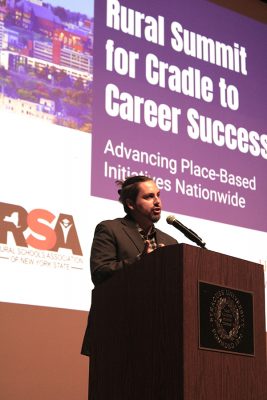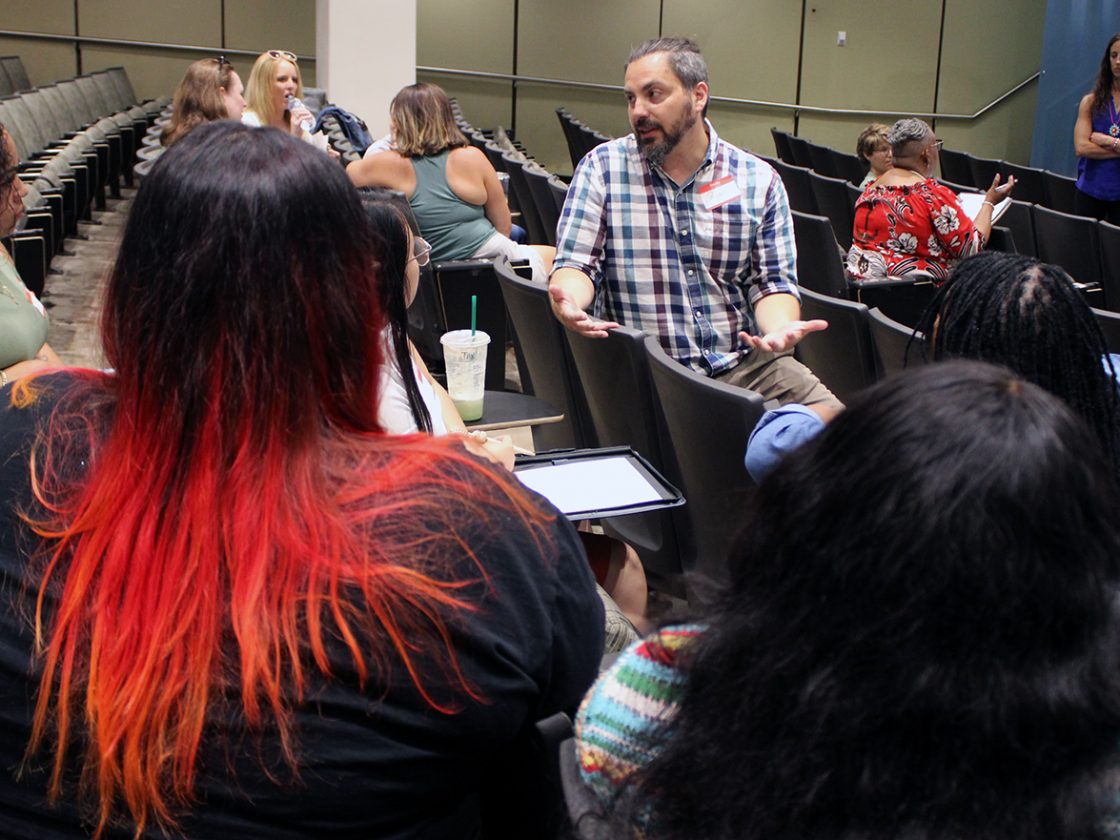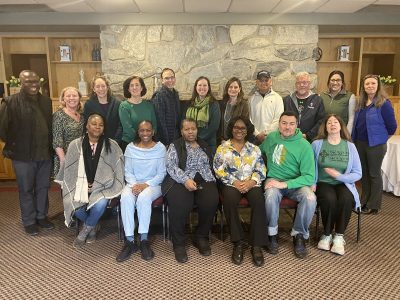Social Work Professor Helps Strengthen Community Schools
When those who work in community school systems explain the impact of this approach in public education, they tell stories about the students they have worked with.
For example, that of the middle school student who came to school with broken eyeglasses held together with tape, until coordinated efforts between school staff and outside agencies made it possible for her to replace them.
In another, how two young siblings navigating the complexity of foster care received consistent care, support and the resources they needed thanks to the collaboration of their school with state and community organizations.
New Knowledge
These stories reflect a vision for the role of schools that extends beyond academics alone. Community schools, which are often described as a strategy rather than a model, use the existing infrastructure of schools as hubs of community development to coordinate services, programs and opportunities that support whole families and communities.
“This strategy recognizes that children learn best when their families have access to resources such as health care, food assistance, housing and job training,” says Ryan Heath, associate professor in the School of Social Work, which was recently incorporated into the School of Education. “Community schools bring those supports into alignment with academic priorities, coordinating the full range of services that young people and their families need to thrive.”
Since joining Syracuse in 2018, Heath has focused much of his research and service on strengthening community school systems in Central New York (CNY).
One of his most significant partnerships is with Wayne County Community Schools, a rural coalition spanning 11 school districts between Syracuse and Rochester. Wayne County initiatives include programs such as STEADY Work, which connects high school students with local employers so they can gain workplace experience and skills, as well as a range of programs that focus on health care and food access.
One of the ways Heath supports this work has been through designing and managing a countywide data infrastructure, so that schools within the district can track progress and measure outcomes. “The reporting requirements for community school initiatives are an enormous lift for practitioners,” Heath says. “Our role has been to take some of that burden off their shoulders while also building a system that can generate new knowledge about what works for young people, under what conditions and in which communities.”
Hyper Local
Inherent to the definition of community schools is a place-based approach to solutions. Community schools tend to focus their efforts in a few general areas, including integrating academic and social-emotional supports, enrichment and out-of-school opportunities, and family and community programming, among others.

Which areas are emphasized and how strategies are implemented depends on the specific needs of the school building. For example, in highly populated urban area, where social service agencies have locations, community schools may focus on helping students and families coordinate and streamline their access. In a rural area, where health care services may be prohibitively distant, community schools coordinators might mobilize visits from primary and dental care to the school itself.
Having data about programmatic impact not only helps community schools to access funding and other resources but also facilitates collaboration and flexible adaptation to changing needs and conditions. Jay Roscup, director within Wayne County Community Schools, says “Our goal is to make sure all students have opportunity for a choice-filled path. It’s what communities have done forever, but we have to systematize it—and the data we gather lets us ask the critical questions about our methodologies.”
Beyond Wayne County, Heath has helped convene networks that connect community school leaders across the state. He co-founded the New York State Community Schools Thruway Coalition, a collaboration among community school networks along the I-90 corridor.
The group allows school districts and community agencies from across Upstate and Central New York to share successes, challenges, and resources. “The strength of these networks is in the relationships,” Heath says. “It’s about creating spaces where schools and community partners can come together, share goals, and problem-solve as equals.”
This summer, Syracuse University hosted two New York State Community Schools Thruway Coalition conferences that explored lessons learned from community schools in both rural and urban areas, while considering how the strategy can be adapted for rural districts.
Enormous Potential
Heath also plays a key role in the CNY Community Schools Collaborative, which includes districts and agencies in Onondaga County and neighboring areas. These regional groups meet regularly to share strategies for integrating mental health services, coordinating after-school programs, and building family engagement.
“Heath has taken the role of facilitator and convener,” says Lura Lunkenheimer, president of Peaceful Schools, an organization that contracts with the Syracuse City School District to provide community schools coordinators in city schools. “This has allowed everyone else at the table to come together in a neutral setting, helping the collaboration grow organically and without some of the typical barriers that can take place when working to create community impact.”
Heath’s path into community schools was shaped by his earlier work in out-of-school-time (OST) programs—after-school and extracurricular activities—as well as a school-based social worker.
Before becoming a professor, he worked extensively in these spaces, coordinating and directing youth development programs and providing student support services in alternative and mainstream schools. These experiences gave him profound appreciation for a holistic approach to students’ well-being and inspired his interest in the community school approach.
“Community schools are one of the clearest intersections between social work and education,” he says. “Both fields hold enormous potential to create more just and equitable systems within communities.” And, he emphasizes, given the precarious nature of social services and public education in this sociopolitical moment, community schools may be one of the best venues we have to serve children and families.
Story by Sarah Griffin



